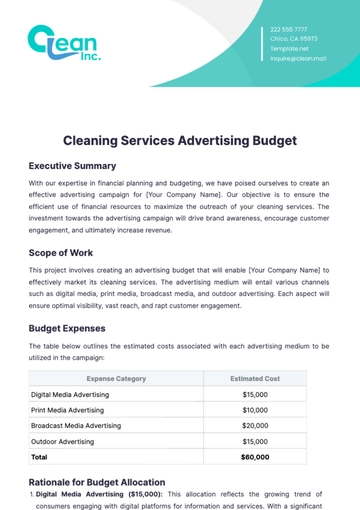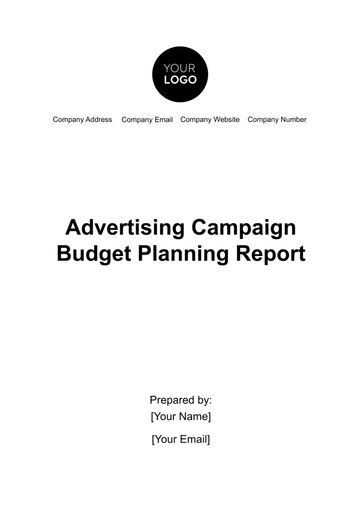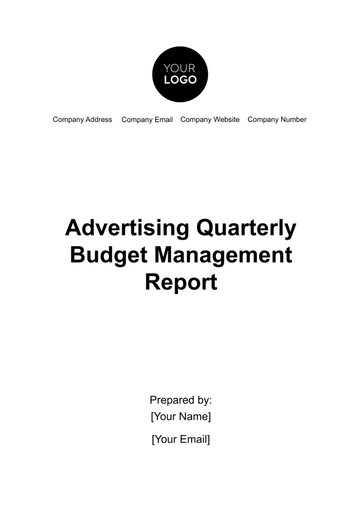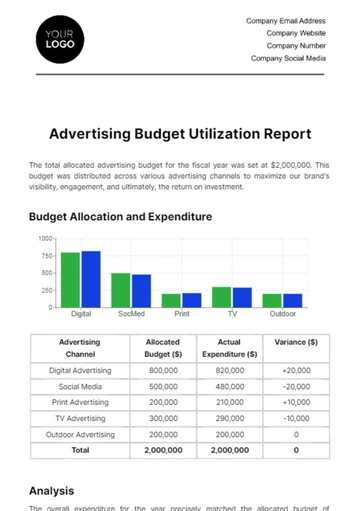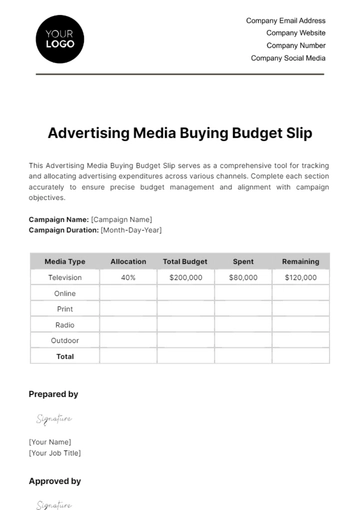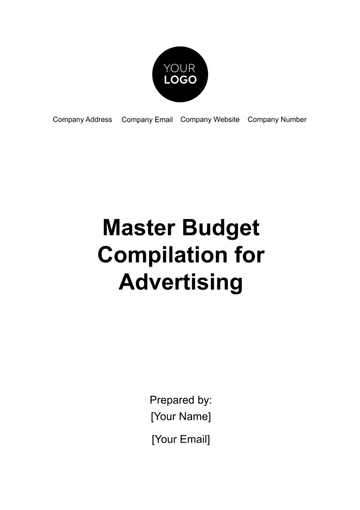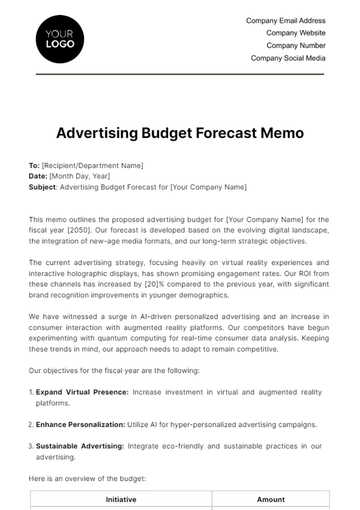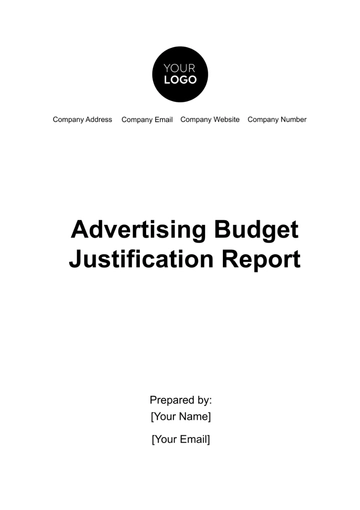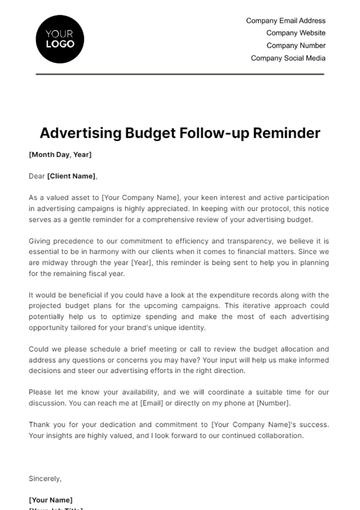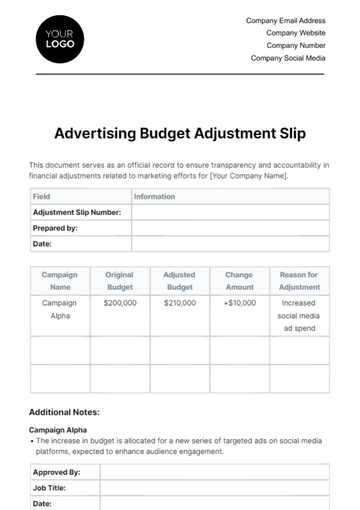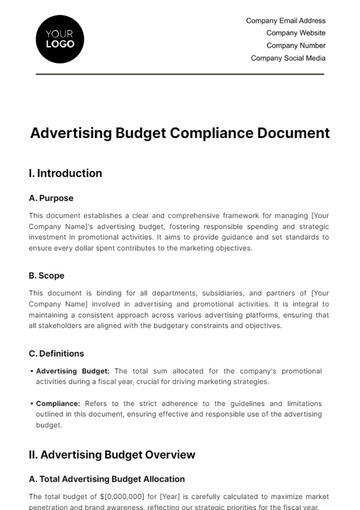Free Advertising Departmental Budget Review

I. Introduction
This Advertising Departmental Budget Review is for the fiscal year 2050-2051. In this comprehensive report, we delve into the strategic allocation of resources, outcomes, and the impact of our advertising initiatives. Our journey over the past year has been marked by innovation, adaptability, and a relentless pursuit of excellence.
As we navigate the ever-evolving advertising landscape, we invite you to explore the intricacies of our budget decisions, the effectiveness of our campaigns, and the stories behind the numbers. Beyond financial figures, this review encapsulates our brand’s resilience, customer connections, and the promise of a brighter future.
II. Budget Allocation and Utilization
The following chart and table summarizes the budget allocation:
Budget Category | Amount |
|---|---|
Digital Marketing | $2,500,000 |
Social Media Campaigns | $1,200,000 |
Traditional Media Advertising | $800,000 |
Event Sponsorships and Collaborations | $1,000,000 |
Research and Development | $500,000 |
Miscellaneous and Overhead Costs | $300,000 |
Total Budget | $6,300,000 |
A. Digital Marketing
Our investment of $2,500,000 in digital marketing was well-founded. AI-driven ad targeting allowed us to reach the right audience at the right time. Personalized content creation ensured relevance, leading to a substantial 35% increase in online engagement. We recognized that the digital landscape was where our audience spent significant time, and our efforts paid off.
B. Social Media Campaigns
With $1,200,000 earmarked for social media campaigns, we embraced the power of AR/VR technologies. Interactive experiences captivated our followers, resulting in a 25% growth in our social media following. Social platforms became not just spaces for promotion but also avenues for authentic conversations with our audience.
C. Traditional Media Advertising
While digital dominated, we didn’t neglect traditional media. Our $800,000 allocation ensured that our brand remained visible on TV, radio, and in print. The 15% increase in brand recall demonstrated that a balanced approach was effective. We recognized that certain demographics still engaged with traditional media, and we capitalized on that.
D. Event Sponsorships and Collaborations
Strategic partnerships with major events and influential figures amplified our brand reputation. These collaborations expanded our market reach and fostered positive associations with our brand. The $1,000,000 investment was a critical driver of our success.
E. Research and Development
Our ongoing market research and trend analysis empowered data-driven decision-making. Insights from R&D informed our advertising strategies, ensuring adaptability in a dynamic landscape. The $500,000 allocated to this category was an investment in staying ahead of the curve.
F. Miscellaneous and Overhead Costs
Administrative expenses, legal fees, and contingency funds were essential for smooth operations. These costs supported our core activities and mitigated unforeseen challenges. The $300,000 dedicated to this area ensured operational efficiency.
III. Outcomes and ROI Analysis
A. Market Presence
Our deliberate allocation of the advertising budget significantly bolstered our market presence. Here’s how:
Digital Dominance: Our robust digital marketing efforts ensured that our brand was omnipresent across online platforms. From targeted ads to personalized content, we left no digital stone unturned. As a result, our visibility expanded, capturing the attention of potential customers.
Traditional Resilience: While digital channels thrived, we didn’t abandon traditional media. Our TV commercials, radio spots, and print advertisements maintained our foothold in the analog world. The 15% increase in brand recall among our audience attests to the effectiveness of this balanced approach.
B. Customer Engagement
Our advertising initiatives weren’t just about impressions; they were about meaningful interactions:
Online Conversations: Social media campaigns allowed us to engage directly with our audience. Whether through polls, live Q&A sessions, or interactive posts, we fostered a sense of community. The 25% growth in our social media following reflected this active engagement.
Personalization Matters: Digital marketing wasn’t a one-size-fits-all strategy. AI-driven ad targeting ensured that our messages resonated with individual preferences. Customers felt seen and heard, leading to a 35% increase in online engagement.
IV. Recommendations and Conclusion
A. Recommendations
As we look ahead to the upcoming fiscal year, it is imperative to consider the following recommendations:
Investment in AI and Machine Learning: Allocate resources to enhance our AI capabilities further. Fine-tuning ad targeting algorithms and leveraging machine learning can optimize our reach and efficiency.
Digital Expansion: Continue expanding our digital footprint. Explore innovative online platforms, such as emerging social networks or niche advertising channels. Staying ahead of trends ensures sustained growth.
Sustainability Initiatives: Environmental consciousness matters. Consider environmentally sustainable advertising practices. Whether it’s eco-friendly packaging for product launches or supporting green causes, our brand’s commitment to sustainability will resonate with conscious consumers.
B. Conclusion
The Advertising Department has effectively utilized its budget to ensure optimal market penetration and brand growth. Our ROI of 40% reflects not only financial efficiency but also the impact we’ve made. As we move forward, we anticipate continued success by embracing technological integration, fostering customer engagement, and staying adaptable. Our legacy isn’t just in numbers; it’s in the stories we tell, the connections we forge, and the brand we build—one strategic choice at a time.
- 100% Customizable, free editor
- Access 1 Million+ Templates, photo’s & graphics
- Download or share as a template
- Click and replace photos, graphics, text, backgrounds
- Resize, crop, AI write & more
- Access advanced editor
Review your advertising department’s budget effectively while ensuring precision with our versatile Advertising Departmental Budget Review Template! This fully editable and customizable review from Template.net ensures you capture every essential detail. Our intuitive AI Editor Tool makes editing convenient, allowing you to provide a clear and comprehensive budget review immediately!
You may also like
- Budget Sheet
- Personal Budget
- Non Profit Budget
- Monthly Budget
- Project Budget
- HR Budget
- Company Budget
- Home Budget
- Weekly Budget
- College Budget
- Business Budget
- Construction Budget
- Small Business Budget
- Hotel Budget
- Annual Budget
- Home Renovation Budget
- Household Budget
- Student Budget
- Grocery Budget
- Marketing Budget
- Corporate Budget
- Startup Budget
- Manufacturing Budget
- Church Budget
- University Budget
- Annual Budget Plan
- Event Budget
- Operating Budget
- Travel Budget
- Food Budget
- IT and Software Budget
- School Budget
- Real Estate Budget
- Sales Budget
- Conference Budget
- Budget Finance
- Freelancer Budget
- Budget Advertising
